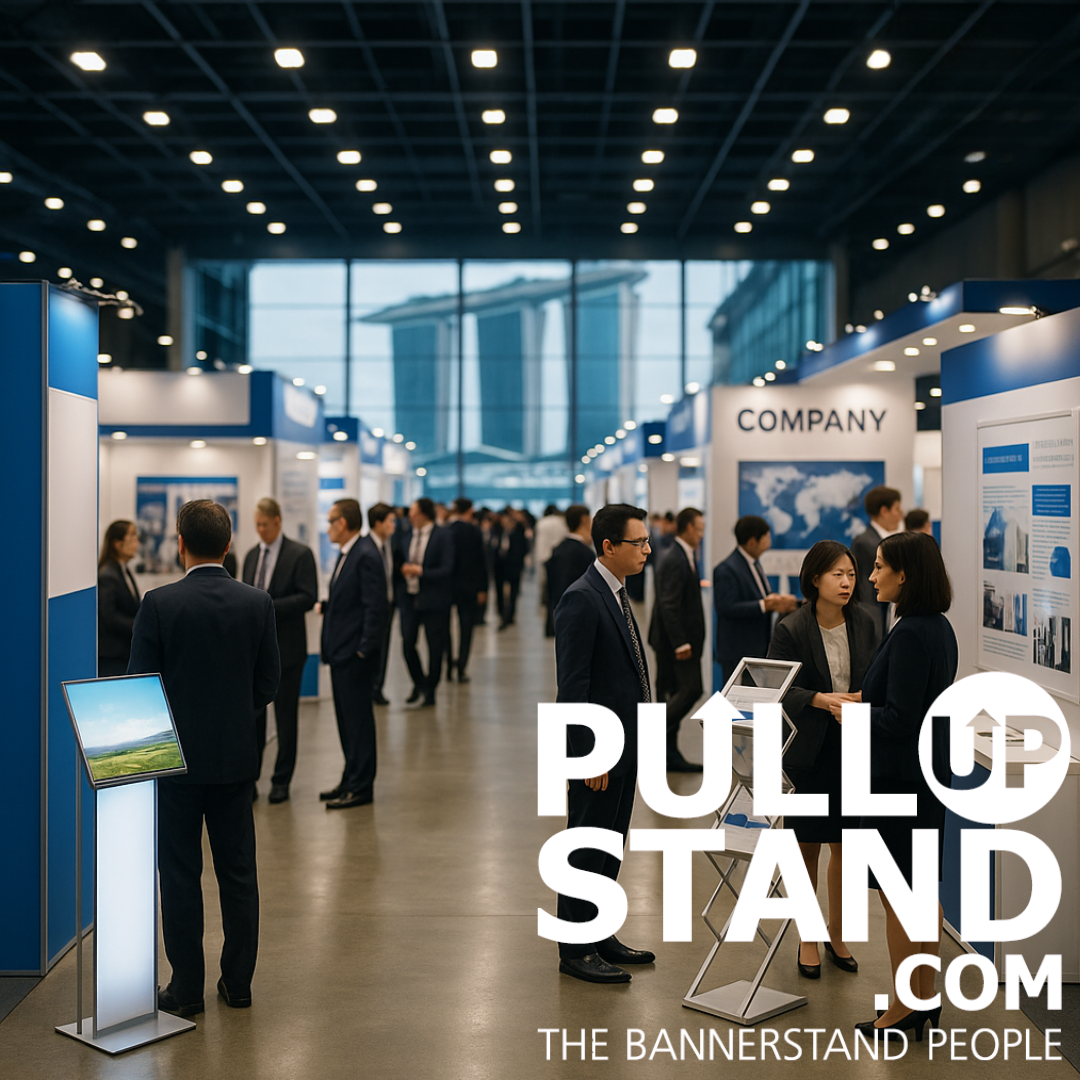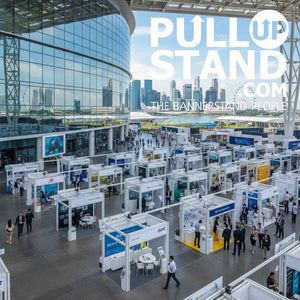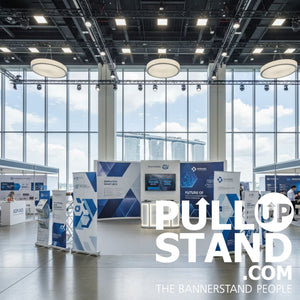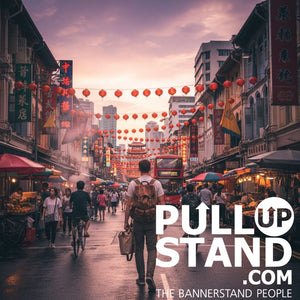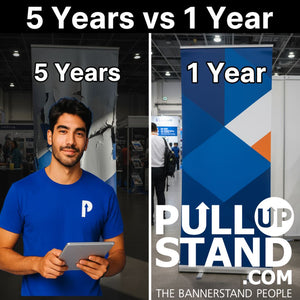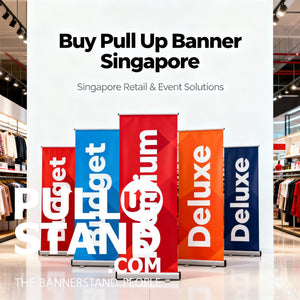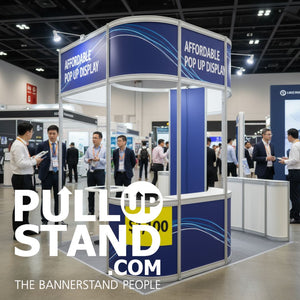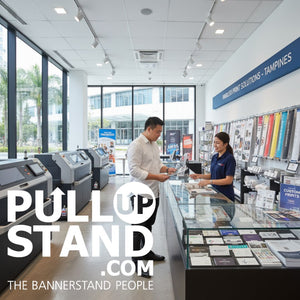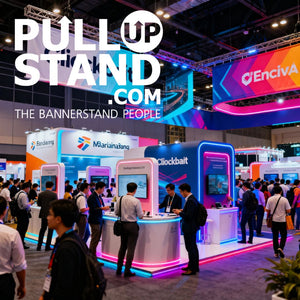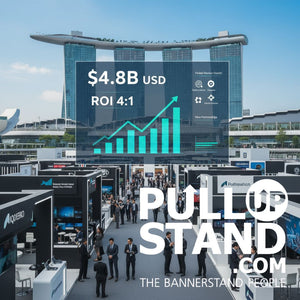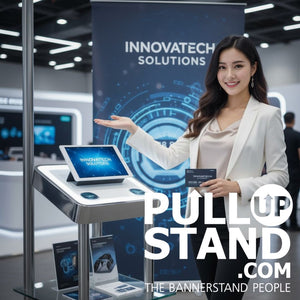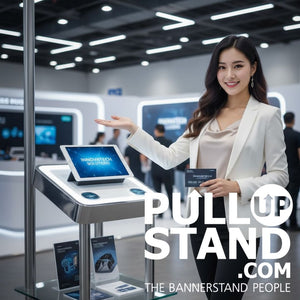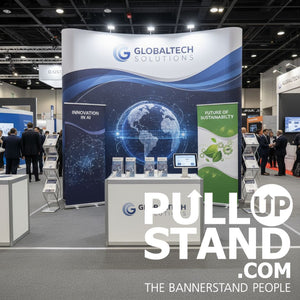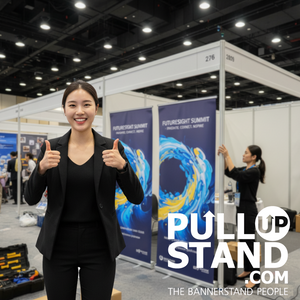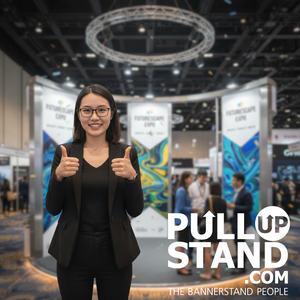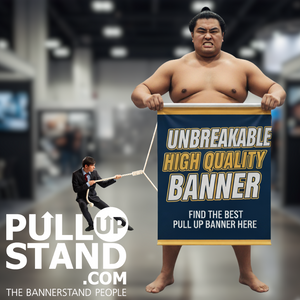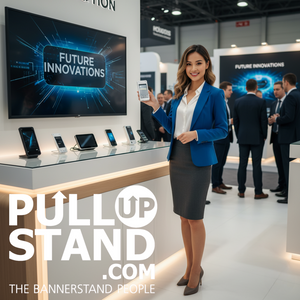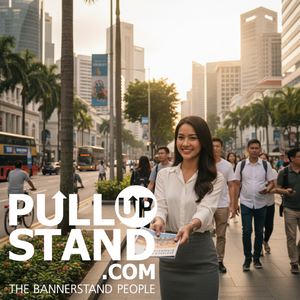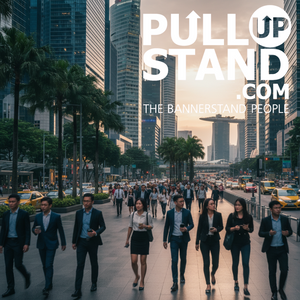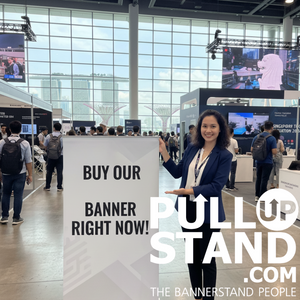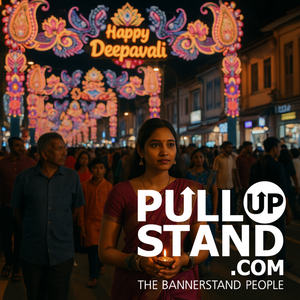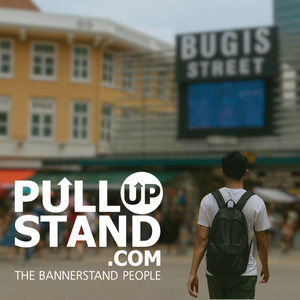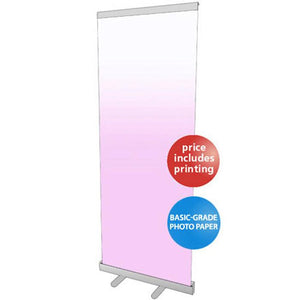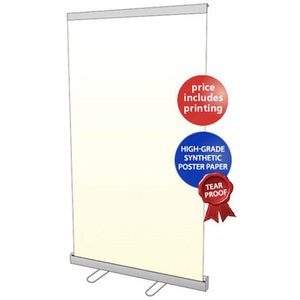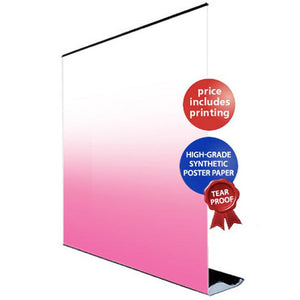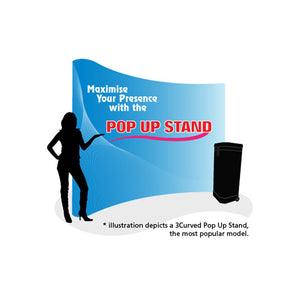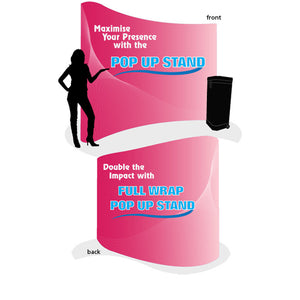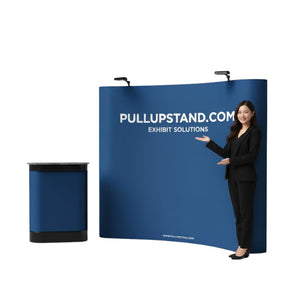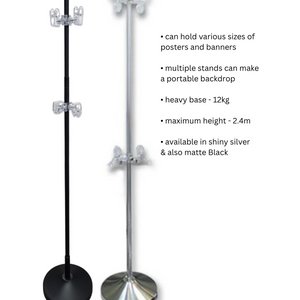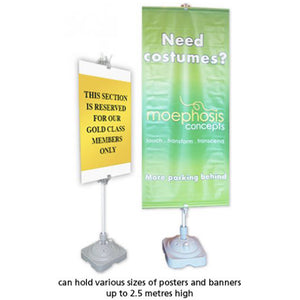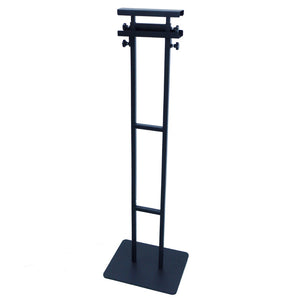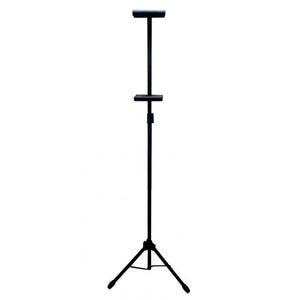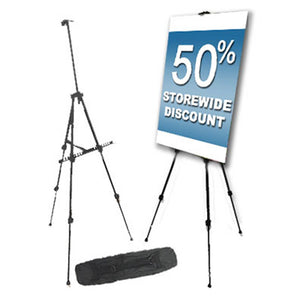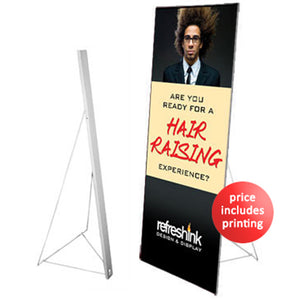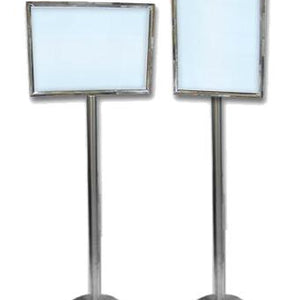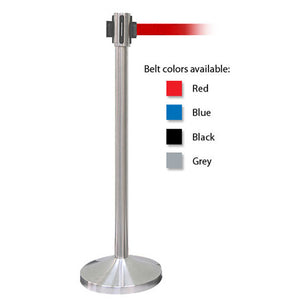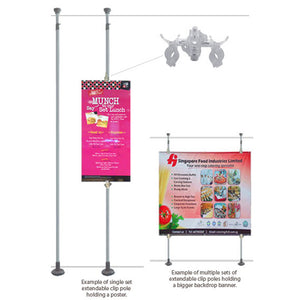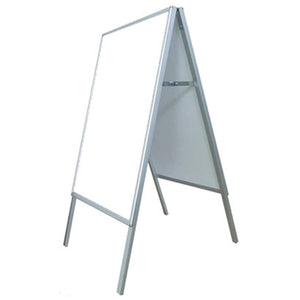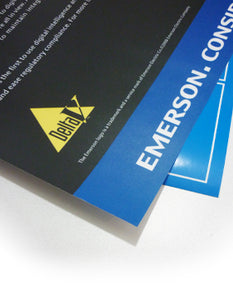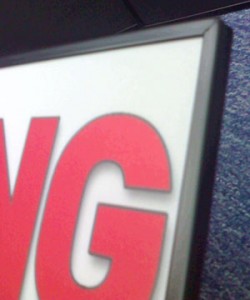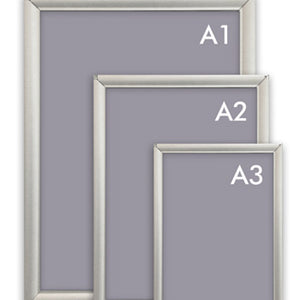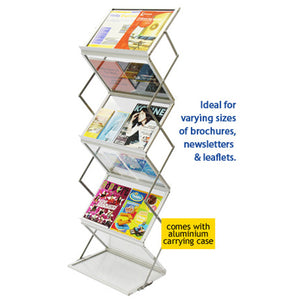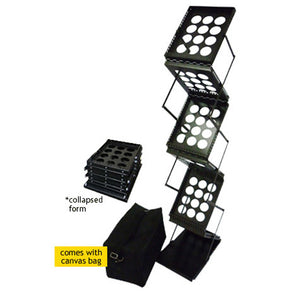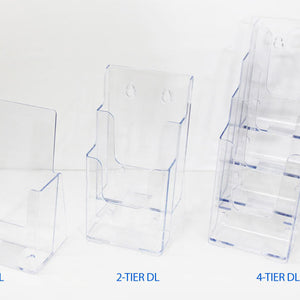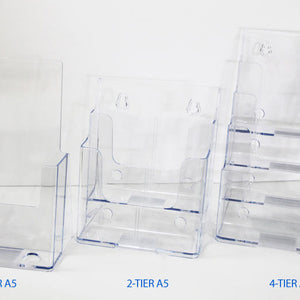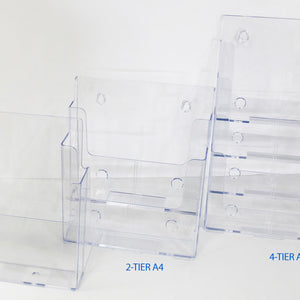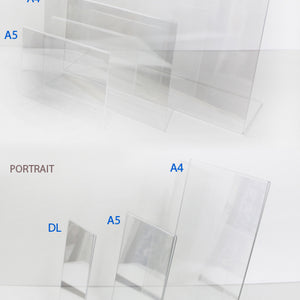Why Singapore is Asia's #1 Exhibition Destination in 2025
Key Statistics 2025:
- 250+ Annual Exhibitions (Growth from post-pandemic recovery)
- 52 Million Visitors Annually (15% increase from 2024)
- $3.4 Billion MICE Revenue (Record high for 2025)
- 175+ Visa-Free Countries (Expanded diplomatic relations)
Singapore has solidified its position as the premier exhibition hub in Southeast Asia, hosting over 250 international trade shows annually in 2025 and welcoming 52 million visitors to its world-class venues. The city-state's strategic position at the crossroads of major trade routes, combined with its business-friendly environment and excellent infrastructure, makes it the ideal gateway for companies looking to expand into Asian markets.
The country's political stability, transparent legal system, and pro-business government policies create an environment where international exhibitors can operate with confidence. Singapore's time zone advantage allows businesses to connect with markets across Asia-Pacific during optimal business hours, while its multicultural workforce and English-speaking environment facilitate smooth communication and operations. The introduction of Singapore's Digital Economy Framework 2025 has further enhanced the exhibition experience with smart venue technologies and streamlined digital processes.
Best Exhibition Materials for Singapore Trade Shows 2025
Transform Your Exhibition Presence with Premium Display Solutions
Success at Singapore exhibitions starts with professional, high-quality display materials that capture attention and communicate your brand message effectively. Whether you're a first-time exhibitor or a seasoned professional, choosing the right display solutions can make the difference between blending into the crowd and standing out as an industry leader.
🎯 Pull-Up Banner Systems
Perfect for maximum impact and portability. Our premium pull-up banners are designed to withstand Singapore's humid conditions while delivering crystal-clear graphics that attract visitors from across the exhibition floor.
Pro Tip: Order multiple banner sizes to create dynamic displays that guide visitor attention and create professional booth aesthetics.
🖼️ Professional Poster Printing
High-resolution poster printing with UV-resistant inks and moisture-resistant materials specifically designed for Singapore's tropical climate. Available in multiple sizes and premium finishes.
Exhibition Tip: Use poster printing for cost-effective wall displays that complement your main banner systems.
🏢 Wall Murals & Large Format
Create stunning visual impact with custom wall murals that transform your exhibition space into an immersive brand environment. Perfect for large booths and backdrop displays.
Space Maximizer: Wall murals create depth and professionalism in any booth size, making small spaces appear larger.
⚡ Zigzag Display Systems
Versatile zigzag displays offer maximum flexibility for different booth configurations. Lightweight, portable, and perfect for creating room dividers or information walls.
Versatility Win: Zigzag systems adapt to any space constraint while maintaining professional appearance.
📋 Foam Board Solutions
Lightweight, durable foam boards perfect for Singapore's exhibition requirements. Fire-retardant materials meet all venue safety standards while providing excellent print quality.
Budget Smart: Foam boards offer premium appearance at budget-friendly prices, perfect for cost-conscious exhibitors.
🎪 Premium Exhibition Stands
Complete exhibition stand solutions that combine multiple display elements into cohesive, professional presentations. Available in modular configurations for any booth size.
All-in-One: Complete stand systems eliminate coordination headaches and ensure perfect component matching.
🏆 Why Choose Professional Exhibition Materials?
- Singapore Climate Ready: All materials designed for tropical conditions with 70-90% humidity
- Fire Safety Compliance: Meeting all Singapore venue requirements with certified materials
- Professional Appearance: High-quality printing and materials that reflect your brand excellence
- Easy International Shipping: Lightweight, compact designs that minimize shipping costs
- Quick Setup: Tool-free assembly systems for stress-free booth preparation
- Reusable Investment: Durable materials designed for multiple exhibition uses
Pre-Exhibition Planning: 6-Month Singapore Trade Show Timeline
Critical Timeline for Exhibition Success
Successful exhibition participation requires systematic planning beginning 6 months before your event. This timeline ensures adequate preparation for all logistical, legal, and marketing requirements while securing the best pricing and booth locations.
Initial Market Research and Goal Setting
Before committing to any Singapore exhibition, conduct thorough market research to understand your target audience, competition, and market opportunities. Define clear, measurable objectives such as lead generation targets, brand awareness goals, or specific sales targets. This foundation will guide all subsequent decisions and help measure ROI.
Identify key stakeholders in your target market, including potential customers, distributors, partners, and industry influencers who will be attending. Research their backgrounds, business needs, and decision-making processes to tailor your approach effectively.
Exhibition Selection and Venue Analysis
Singapore hosts exhibitions across various industries at premier venues including Marina Bay Sands, Suntec Singapore Convention & Exhibition Centre, Singapore Expo, and Changi Exhibition Centre. Each venue has distinct characteristics, target audiences, and logistical considerations.
Marina Bay Sands attracts premium, luxury-focused events with high-net-worth attendees but comes with premium pricing. Suntec Singapore offers central location advantages with excellent transport links, while Singapore Expo provides the largest floor space for major trade shows. Choose venues that align with your target market and budget constraints.
Registration and Booth Selection
Register early to secure prime booth locations and take advantage of early-bird pricing discounts. Premium locations near entrances, food courts, or seminar areas command higher prices but deliver significantly better foot traffic and visibility.
Consider booth size carefully - larger spaces provide more display opportunities but require proportionally higher investment in materials and staffing. Many successful exhibitors start with smaller booths and expand in subsequent years based on performance and market response.
6-Month Preparation Checklist
- Complete market research and competitor analysis
- Register for exhibition and select optimal booth location
- Apply for necessary visas and business permits
- Begin customs documentation for material imports
- Reserve accommodation and transportation
- Start design process for roll-up banners and display materials
- Identify local suppliers and service providers
- Create exhibition budget and financial planning
- Develop marketing and promotional timeline
- Establish team roles and responsibilities
Comprehensive Documentation and Legal Requirements
Business Registration and Corporate Documents
Prepare complete corporate documentation including business registration certificates, company profiles, audited financial statements, and organizational charts. Singapore authorities may require these documents for various permits and registrations.
Ensure all documents are notarized, apostilled (if required), and translated into English if originally in other languages. Keep both physical and digital copies, with cloud-based backups for critical documents.
Intellectual Property Protection
Register trademarks and patents in Singapore before exhibition participation to protect your intellectual property. Singapore's robust IP protection framework provides strong legal recourse against infringement, but registration is essential for enforcement.
File defensive registrations in relevant product categories to prevent competitors from blocking your trademark rights. Consider working with local IP attorneys who understand Singapore's registration processes and timelines.
Customs and Import Documentation
Prepare comprehensive customs documentation including detailed commercial invoices, packing lists with exact weights and dimensions, certificates of origin, and any required permits for restricted items. Singapore customs authorities are strict about documentation accuracy and completeness.
For temporary imports, utilize Singapore's Temporary Import Scheme (TIS) which allows duty-free import of exhibition materials for up to 6 months. Appoint an experienced local customs broker who can handle complex procedures and ensure compliance with all regulations.
⚠️ Critical Documentation Requirements: Incomplete or inaccurate documentation can result in significant delays, additional fees, or even prohibition of material entry. Always work with experienced local customs agents and start documentation processes at least 6 weeks before shipping.
Advanced Visa and Immigration Strategies
Visitor Categories and Requirements
Singapore offers different visa categories depending on visit purpose and duration. Business visitors can enter visa-free for 14-90 days depending on nationality, while longer stays may require appropriate work permits or professional visit passes.
For exhibition staff requiring extended stays or multiple entries, consider applying for Multiple Journey Visas (MJV) which provide flexibility for pre-event setup and post-event activities. Processing times vary from 3-30 days depending on nationality and application completeness.
Team Visa Coordination
For large exhibition teams, coordinate visa applications to ensure all team members can enter Singapore simultaneously. Provide detailed exhibition participation letters, venue confirmations, and accommodation bookings to support visa applications.
Designate a visa coordinator to track application status, follow up with authorities, and manage any issues that arise. Maintain contingency plans for team members who may face visa delays or rejections.
Immigration Best Practices
Brief all team members on Singapore immigration requirements and proper documentation. Carry printed copies of exhibition participation letters, venue confirmations, and return flight tickets. Immigration officers may ask detailed questions about business activities and duration of stay.
Ensure all passports have minimum 6 months validity beyond travel dates. Damaged or altered passports may cause entry delays or rejections at immigration checkpoints.
Comprehensive Logistics and Shipping Solutions
Shipping Timeline and Method Selection
Plan shipping schedules based on material types, costs, and urgency. Sea freight requires 4-6 weeks but costs significantly less than air freight. Air freight delivers in 3-7 days but costs 3-5 times more than sea freight.
Consider hybrid approaches for different material types - ship heavy display materials by sea while sending last-minute materials and samples by air. This optimization can reduce total logistics costs by 20-40% compared to single-method shipping.
Advanced Packaging and Crating
Use professional crating services for valuable equipment and delicate materials. Singaporean humidity and handling procedures require moisture-resistant packaging and shock-absorption systems.
Label all packages clearly with both English and local language descriptions. Include detailed inventory lists inside each package and maintain master inventory tracking throughout the shipping process.
Local Logistics and Handling
Partner with established logistics companies that have experience with Singapore exhibition requirements. They provide essential services including customs clearance, venue delivery, storage, and return shipping coordination.
Many logistics partners offer comprehensive packages including pickup from venue, secure storage, and consolidated return shipping for multiple exhibitors. These services can reduce costs and complexity for international participants.
💡 Smart Logistics Planning: Consider ordering your standee banners and other display materials locally in Singapore to avoid shipping costs and customs delays. Local production often provides faster turnaround and better cost efficiency for standard materials.
Emergency Logistics Planning
Develop contingency plans for shipping delays, damaged materials, or customs issues. Maintain relationships with local suppliers who can provide emergency printing, display materials, or equipment rental services.
Create digital backups of all critical materials and maintain relationships with local printing services for emergency reproduction. Singapore's excellent printing industry can reproduce most materials within 24-48 hours if needed.
Strategic Accommodation and Transportation Planning
Accommodation Strategy by Budget and Objectives
Luxury accommodations in Marina Bay area ($450-900/night) provide prestige and networking opportunities but require significant budget allocation. Mid-range business hotels ($250-450/night) offer excellent value with professional amenities and good transport links.
Budget options ($120-250/night) work well for cost-conscious exhibitors, especially when combined with efficient transport planning. Singapore's excellent MRT system provides quick access to all major venues from most accommodation areas.
Corporate Housing and Extended Stays
For teams staying longer than 2 weeks, consider serviced apartments or corporate housing options. These provide better value for extended stays, kitchen facilities for team meals, and meeting spaces for client entertainment.
Many corporate housing providers offer exhibition packages including shuttle services, meeting room access, and concierge services specifically designed for business travelers and exhibition participants.
Transportation and Mobility Solutions
Singapore's integrated transport system includes MRT trains, buses, and taxis that provide reliable connections to all venues. Purchase EZ-Link cards for convenient travel across all transport modes.
For teams with heavy materials or frequent venue visits, consider vehicle rental or private driver services. Many companies offer exhibition-specific packages including venue-to-venue transfers and airport pickup services.
Professional Exhibition Materials and Printing Excellence
Climate-Optimized Materials
Singapore's tropical climate with 70-90% humidity requires specialized materials and printing techniques. Use UV-resistant inks to prevent fading, moisture-resistant substrates to avoid warping, and fire-retardant materials to meet venue safety requirements.
All printing materials must comply with Singapore's fire safety standards. Work with certified printing providers who automatically supply compliant materials and can provide necessary certificates for venue approval.
Strategic Display System Selection
Pull-up banners offer maximum versatility for different booth configurations and pack efficiently for international shipping. They set up quickly without tools and provide excellent visibility-to-cost ratios for most exhibition scenarios.
Modular display systems provide flexibility for multiple events and different booth sizes. While initial investment is higher, these systems deliver better long-term value for companies participating in multiple exhibitions annually.
2025 Sustainability and Digital Integration Requirements
Singapore's Green Plan 2030 significantly impacts exhibition requirements in 2025. All venues now require carbon footprint declarations for large exhibitions, while sustainable materials earn up to 15% booth rental discounts. Digital integration is mandatory with QR code visitor tracking, contactless payment systems, and hybrid participation options becoming standard across all major venues.
New regulations require biodegradable promotional materials where possible, and venues offer comprehensive recycling programs for all exhibition waste. LED-only lighting policies and energy-efficient display requirements support Singapore's net-zero commitment while reducing operational costs for exhibitors.
Pull-up banners offer maximum versatility for different booth configurations and pack efficiently for international shipping. They set up quickly without tools and provide excellent visibility-to-cost ratios for most exhibition scenarios.
Modular display systems provide flexibility for multiple events and different booth sizes. While initial investment is higher, these systems deliver better long-term value for companies participating in multiple exhibitions annually.
Professional Material Selection Guide
Choose from our comprehensive range of premium banners that are specifically designed for Singapore's exhibition environment. Our materials undergo rigorous testing to ensure durability, safety compliance, and visual impact that lasts throughout your entire exhibition period.
Digital Integration and Backup Solutions
Digital displays enhance visitor engagement and allow real-time content updates during exhibitions. However, always maintain static backup displays for technical failure scenarios.
Consider interactive elements like touchscreen kiosks, QR code integration, and augmented reality features that appeal to tech-savvy Asian audiences. Ensure all digital elements have offline backup capabilities and local technical support options.
Promotional Materials Strategy
Select promotional items that comply with airline regulations and appeal to diverse cultural preferences. USB drives, premium notebooks, and quality pens work universally across different business cultures.
Avoid items with batteries, liquids, or sharp objects that complicate air travel. Focus on practical, high-quality items that recipients will use regularly, ensuring extended brand exposure beyond the exhibition period.
Advanced Booth Design and Space Optimization
Cultural Design Considerations
Singapore's multicultural business environment requires design approaches that appeal across different cultural preferences. Use clean, professional aesthetics that convey quality and reliability while avoiding culturally specific symbols or colors that might exclude potential visitors.
Color psychology varies across cultures - blue conveys trust universally, while red can represent prosperity in Chinese culture but urgency in Western contexts. Choose colors that support your brand message across diverse cultural interpretations.
Traffic Flow and Visitor Experience Design
Design booth layouts that accommodate Singapore's diverse business culture and high-density exhibition environments. Create clear sight lines from main traffic flows and design multiple conversation areas to handle peak visitor periods.
Consider the 4-meter rule - most exhibition visitors make decisions about booth visits within 4 meters of approach. Ensure your key messages and value propositions are clearly visible from this critical distance using strategically positioned display systems.
Technology Integration and Power Management
Singapore venues provide reliable power infrastructure, but electrical specifications vary between venues. Confirm voltage, plug types, and power capacity during booth planning phases.
Plan for Singapore's digital-savvy audience with appropriate technology integration including WiFi connectivity for demonstrations, charging stations for visitor devices, and social media integration opportunities.
Modular Design for Flexibility
Design booth elements that can adapt to different space configurations for future exhibitions. Modular systems provide flexibility while maintaining professional appearance across various venue requirements.
Consider storage and shipping implications during design phases. Modular components should pack efficiently and survive international shipping while maintaining professional appearance after multiple uses.
Comprehensive Marketing and Promotional Strategies
Pre-Exhibition Marketing Campaign
Launch marketing campaigns 8-12 weeks before exhibition dates to maximize attendance and scheduled meetings. Use combination of email marketing, social media engagement, and direct outreach to target prospects.
Create exhibition-specific landing pages with clear value propositions and meeting scheduling functionality. Track visitor engagement and follow up systematically with interested prospects.
Press and Media Relations
Singapore's business media actively covers major trade shows and industry developments. Develop press releases highlighting innovative products, major announcements, or industry insights relevant to Asian markets.
Schedule media interviews during exhibition days and provide press kits with high-resolution images, company backgrounders, and executive biographies. Many exhibitions offer press center facilities and media coordination services.
Social Media and Digital Engagement
Develop social media strategies that leverage exhibition participation for broader brand awareness. Create exhibition-specific hashtags, share behind-the-scenes content, and engage with attendee posts.
Live streaming, video interviews, and real-time updates can extend exhibition reach beyond physical attendees. Singapore's excellent internet infrastructure supports high-quality digital content creation and sharing.
Partnership and Collaboration Opportunities
Explore partnership opportunities with complementary exhibitors, local distributors, or industry associations. Joint marketing efforts can expand reach while reducing individual marketing costs.
Many successful exhibitors coordinate with existing customers or partners to host joint hospitality events, customer appreciation functions, or product launch celebrations during exhibition periods.
Advanced Networking and Business Etiquette
Cultural Business Practices
Understanding Singapore's multicultural business environment is crucial for networking success. While English is the primary business language, showing awareness of Chinese, Malay, and Indian cultural practices demonstrates respect and cultural sensitivity.
Business card exchange follows specific protocols - present and receive cards with both hands, read cards carefully before storing them respectfully. Never write on business cards or treat them casually during interactions.
Professional Networking Strategies
Effective networking requires systematic approaches rather than random interactions. Research attendee lists, identify key targets, and schedule specific meetings in advance whenever possible.
Prepare elevator pitches in multiple formats - 30-second introductions for casual encounters, 2-minute overviews for scheduled meetings, and comprehensive presentations for serious prospects. Practice these pitches until they feel natural and conversational.
Follow-up and Relationship Building
Professional relationship building extends far beyond exhibition periods. Develop systematic follow-up processes that nurture connections over time and provide ongoing value to new contacts.
Consider establishing Singapore-based representation or partnerships for ongoing relationship maintenance. Asian business culture values long-term relationships over transactional interactions.
Technology Integration and Digital Strategies
Digital Infrastructure Planning
Singapore's advanced digital infrastructure supports sophisticated technology integration, but plan carefully for peak usage periods when thousands of devices compete for bandwidth.
Prepare offline capabilities for all digital demonstrations and ensure backup power sources for critical technology components. Venue power interruptions are rare but can occur during peak usage periods.
Lead Capture and CRM Integration
Implement digital lead capture systems that integrate directly with your CRM platforms. QR codes, digital forms, and mobile apps streamline data collection while reducing manual entry errors.
Ensure GDPR and local privacy regulation compliance for all data collection activities. Singapore has strict personal data protection laws that require appropriate consent and handling procedures.
Virtual and Hybrid Capabilities
Consider virtual exhibition capabilities that extend your reach beyond physical attendees. Live streaming, virtual booth tours, and online meeting scheduling can multiply your exhibition investment returns.
Many Singapore exhibitions now offer hybrid formats combining physical and virtual participation. These formats can reduce costs while expanding global reach and accessibility.
Financial Planning and ROI Measurement
Total Cost of Participation Analysis
Calculate comprehensive participation costs including booth rental, material production, shipping, accommodation, travel, staffing, marketing, and contingency reserves. Many first-time exhibitors underestimate total costs by 25-45% in the current market.
Space rental typically represents only 20-30% of total exhibition costs in 2025. Factor in material production (18-25%), logistics and shipping (12-18%), accommodation and travel (25-30%), staffing (12-18%), and marketing activities (8-12%).
ROI Measurement and Tracking
Establish clear ROI metrics before exhibition participation including lead generation targets, sales pipeline value, brand awareness improvements, and partnership development objectives. Track these metrics systematically throughout the exhibition cycle.
Implement lead scoring systems that prioritize follow-up activities and resource allocation. Not all exhibition leads provide equal value - focus resources on highest-potential prospects for maximum ROI.
Strategic Follow-Up and Relationship Development
Immediate Post-Exhibition Activities
Begin follow-up activities within 24-48 hours after exhibition conclusion while interactions remain fresh in prospects' memories. Personalized messages referencing specific conversations perform significantly better than generic communications.
Prioritize follow-up activities based on lead scoring and potential value. High-priority prospects should receive personal calls or meetings, while lower-priority leads can receive email sequences or marketing automation campaigns.
Long-Term Relationship Building
Develop systematic relationship building processes that extend beyond immediate sales opportunities. Singapore's business culture values long-term partnerships over transactional relationships.
Consider establishing regular communication schedules with key prospects including industry updates, market insights, and relevant business intelligence that provides ongoing value beyond sales activities.
Market Intelligence and Feedback Analysis
Analyze exhibition feedback, competitor intelligence, and market insights gathered during exhibition participation. This intelligence can inform product development, marketing strategies, and future exhibition planning.
Document lessons learned and successful strategies for future reference. Many successful exhibition programs improve systematically through careful analysis and continuous improvement processes.
🎯 Maximizing Your Exhibition Investment
Success at Singapore exhibitions requires more than just showing up with basic materials. Invest in professional presentation elements including high-quality lightbox displays that ensure your brand message remains visible and impactful throughout the entire exhibition period, creating lasting impressions that convert into business opportunities.
Long-Term Success Strategies
Multi-Year Planning and Development
Successful exhibition programs require multi-year planning and consistent market development efforts. Singapore's business relationships develop over time through consistent presence and reliable performance.
Consider graduated expansion strategies starting with smaller booth spaces and growing based on market response and ROI performance. This approach reduces initial risk while building sustainable market presence.
Local Partnership Development
Explore opportunities for local partnerships, distributorships, or representation that can extend your market presence beyond exhibition periods. Singapore's strategic location makes it an excellent hub for broader Asian market development.
Many successful international companies establish Singapore operations specifically to support regional market development and ongoing customer relationship management.
Continuous Improvement and Innovation
Exhibition success requires continuous improvement and innovation in approaches, materials, and strategies. Singapore's competitive exhibition environment rewards companies that consistently improve their participation quality and effectiveness.
Invest in ongoing training, technology upgrades, and market research to maintain competitive advantages and improve ROI over time. Track industry trends and emerging technologies that can enhance future exhibition participation.
🏆 Your Path to Exhibition Excellence
Ready to transform your Singapore exhibition experience? Partner with professionals who understand the unique requirements of Singapore's exhibition environment. From custom design consultation to premium materials that withstand tropical conditions, ensure your investment delivers maximum results with proven exhibition solutions.
Risk Management and Insurance
Comprehensive Insurance Coverage
Purchase comprehensive insurance coverage including general liability, product liability, cyber liability, and business interruption insurance. Many standard policies require specific endorsements for international exhibition participation.
Consider exhibition-specific insurance policies that cover booth materials, shipping delays, event cancellation, and business interruption caused by exhibition-related issues. These specialized policies often provide better coverage for exhibition risks.
Health and Safety Planning
Ensure all team members have appropriate health insurance coverage for Singapore travel. Singapore's healthcare system is excellent but expensive for uninsured individuals.
Prepare health and safety protocols for your exhibition team including emergency contact procedures, medical facility locations, and insurance claim processes. Singapore's tropical climate and long exhibition hours can pose health challenges for unprepared participants.
Business Continuity Planning
Develop contingency plans for various risk scenarios including key personnel illness, material shipping delays, venue changes, or emergency evacuation requirements. These plans should include local supplier contacts, emergency funding access, and communication procedures.
Maintain secure backups of all critical materials and data in Singapore or accessible cloud-based systems. This ensures business continuity even if primary materials are lost or damaged during shipping or exhibition activities.
Exhibition Day Execution Excellence
Team Preparation and Training
Conduct comprehensive team training covering product knowledge, cultural sensitivity, lead qualification techniques, and emergency procedures. All team members should understand exhibition objectives and their individual responsibilities.
Prepare role-playing exercises that simulate various visitor interactions and scenarios. Singapore's diverse business environment requires flexibility and adaptability in visitor engagement approaches.
Daily Operations Management
Establish daily operation schedules including setup times, break rotations, lead processing procedures, and end-of-day activities. Maintain consistent booth appearance and energy levels throughout exhibition periods.
Implement systematic lead capture and qualification processes to ensure no opportunities are missed. Designate specific team members for different activities including visitor engagement, lead processing, and administrative tasks.
Real-Time Performance Monitoring
Track key performance indicators throughout exhibition periods including visitor numbers, lead quality, meeting schedules, and competitor activities. This real-time monitoring enables quick adjustments to improve performance.
Maintain regular communication with team members to address issues quickly and share successful tactics across the entire team. Daily debriefing sessions help improve performance and team coordination.
Conclusion: Your Path to Singapore Exhibition Success
Singapore offers extraordinary opportunities for international businesses seeking Asian market expansion, but success requires thorough preparation, professional execution, and long-term commitment to relationship building. The city-state's excellent infrastructure, strategic location, and business-friendly environment create ideal conditions for exhibition success, but participants must understand local requirements and cultural nuances to maximize their investment returns.
Quality exhibition materials, professional booth presentation, and systematic follow-up processes form the foundation of successful exhibition participation. Companies that invest in comprehensive preparation, cultural understanding, and long-term relationship building consistently achieve superior results compared to those who treat exhibitions as one-time promotional activities.
Ready to begin your Singapore exhibition journey? Start planning 6 months in advance, invest in quality materials and professional presentation, and commit to building lasting business relationships that will drive long-term success in Asian markets. Singapore's exhibition environment rewards preparation, professionalism, and persistence - three elements that separate successful exhibitors from the rest.
🚀 Start Your Exhibition Success Story Today
Transform your exhibition presence with professional materials designed specifically for Singapore's unique requirements. From concept to installation, ensure your success with proven solutions that deliver results.
Your Singapore exhibition success starts here.
Frequently Asked Questions About Singapore Exhibitions
How much does it cost to exhibit in Singapore in 2025?
Exhibition costs in Singapore have increased to $18,000-65,000 for a 3x3m booth including space rental, materials, shipping, and accommodation. Premium venues like Marina Bay Sands command higher prices but deliver superior audience quality. Updated budget breakdown for 2025: booth space (20-30%), materials and design (18-25%), logistics and shipping (12-18%), accommodation and travel (25-30%), staffing (12-18%), marketing (8-12%).
What are the best exhibition venues in Singapore for 2025?
Singapore's top exhibition venues in 2025 include Marina Bay Sands (luxury/premium events with highest ROI), Suntec Singapore Convention Centre (central location, excellent transport, newly renovated spaces), Singapore Expo (largest capacity, major international trade shows), and Changi Exhibition Centre (emerging venue with state-of-the-art digital facilities). Each venue serves different industries and audience segments with enhanced safety protocols.
How far in advance should I book Singapore exhibition space for 2025-2026?
Book exhibition space 10-15 months in advance for major trade shows, especially during peak seasons (March-May, September-November). Post-pandemic demand has increased competition for prime booth locations. Early booking secures premium positioning, better pricing (early bird discounts up to 25%), and adequate time for visa processing, material production, and comprehensive marketing campaigns.
What visa requirements apply for Singapore exhibitions in 2025?
Business visitors from 175+ countries (expanded from 170 in 2024) enter Singapore visa-free for 14-90 days depending on nationality. Exhibition staff requiring extended stays may need Multiple Journey Visas (MJV) or professional visit passes. Processing has improved to 2-21 days depending on nationality with enhanced digital application systems launched in 2025.
What materials work best in Singapore's tropical climate for 2025 exhibitions?
Singapore's 70-90% humidity requires advanced UV-resistant inks, enhanced moisture-resistant substrates, and upgraded fire-retardant materials meeting stricter 2025 venue safety standards. New eco-friendly pull-up banners, sustainable foam boards, and modular displays perform exceptionally well while supporting Singapore's Green Plan 2030 initiatives.
How do I ship exhibition materials to Singapore in 2025?
Use Singapore's enhanced Temporary Import Scheme (TIS 2.0) for streamlined duty-free material imports up to 6 months. Sea freight takes 4-6 weeks with improved tracking, while air freight delivers in 2-5 days at 3-4x higher cost (reduced from previous 5x due to improved logistics). Digital customs processing launched in 2025 requires appointment of certified local customs brokers 6-8 weeks before shipping.
What cultural considerations matter for Singapore exhibitions in 2025?
Singapore's increasingly digital and multicultural environment requires hybrid approach combining traditional Asian business protocols with modern tech-savvy engagement. Enhanced focus on sustainability, digital business card exchange options, and AI-integrated networking tools. Professional attire standards remain high, with increased emphasis on sustainable fashion choices reflecting Singapore's environmental commitments.
Which Singapore exhibition offers the best ROI for my industry in 2025?
ROI optimization in 2025 focuses on hybrid participation models combining physical and digital engagement. Technology and fintech events at Marina Bay Sands show 35% higher conversion rates, manufacturing shows at Singapore Expo offer 40% broader industry coverage than 2024, while specialized AI and sustainability conferences at Suntec provide premium networking with 60% more qualified leads per interaction.

